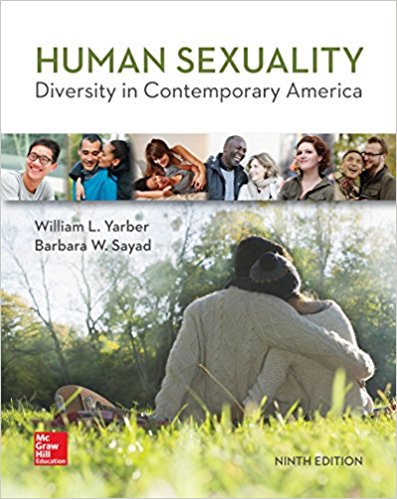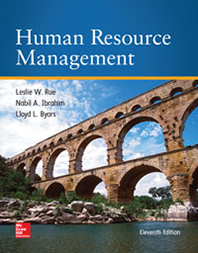Description
Test Bank Human Sexuality Diversity in Contemporary America 9th Edition by William Yarber
Chapter 6
MULTIPLE CHOICE
- Ernest Borneman suggested that the first phase of sexual development be called the
- anal phase.
- phallic phase.
- cutaneous phase.
- latency phase.
Answer: C
Bloom’s Level: Remember
Difficulty: Low
Feedback: Sexuality in Infancy and Childhood (Ages 0 to 11), 156
Topic: Infancy
APA Learning Outcome: 1.1 Describe key concepts, principles, and overarching themes in psychology
Learning Objective: Discuss psychosexual development in infancy and childhood, including sexual curiosity, sex play, and masturbation, and the role of the family in teaching children about sexuality.
- Why does Ernest Borneman suggest that infants are in the “cutaneous phase” of sexual development?
- He believed that psychosexual development starts by age three in children.
- He notes the obvious pleasure infants get from tactile stimulation of any kind.
- He believes that too much touching and caressing can sexually arouse an infant.
- He observes that infants get pleasure from touching their genital area.
Answer: B
Bloom’s Level: Understand
Difficulty: Medium
Feedback: Sexuality in Infancy and Childhood (Ages 0 to 11), 156
Topic: Infancy
APA Learning Outcome: 1.2 Develop a working knowledge of psychology’s content domains
Learning Objective: Discuss psychosexual development in infancy and childhood, including sexual curiosity, sex play, and masturbation, and the role of the family in teaching children about sexuality.
- Humans’ earliest lessons come from
- emotional bonding with a parent during the first two years of life.
- interpretation of others’ body language, facial expressions, and tone of voice.
- masturbation in infancy.
- rewards and punishment.
Answer: B
Bloom’s Level: Understand
Difficulty: Medium
Feedback: Sexuality in Infancy and Childhood (Ages 0 to 11), 157
Topic: Infancy
APA Learning Outcome: 1.2 Develop a working knowledge of psychology’s content domains
Learning Objective: Discuss psychosexual development in infancy and childhood, including sexual curiosity, sex play, and masturbation, and the role of the family in teaching children about sexuality.
- According to Ernest Borneman, the single erogenous zone during the first phase of psychosexual development is the
- mouth.
- anus.
- genitalia.
- skin.
Answer: D
Bloom’s Level: Remember
Difficulty: Low
Feedback: Sexuality in Infancy and Childhood (Ages 0 to 11), 156
Topic: Infancy
APA Learning Outcome: 1.2 Develop a working knowledge of psychology’s content domains
Learning Objective: Discuss psychosexual development in infancy and childhood, including sexual curiosity, sex play, and masturbation, and the role of the family in teaching children about sexuality.
- At what age do boys begin having erections?
- shortly after birth
- two years after birth
- post-puberty
- in the womb
Answer: D
Bloom’s Level: Remember
Difficulty: Low
Feedback: Sexuality in Infancy and Childhood (Ages 0 to 11), 157
Topic: Infancy
APA Learning Outcome: 1.2 Develop a working knowledge of psychology’s content domains
Learning Objective: Discuss psychosexual development in infancy and childhood, including sexual curiosity, sex play, and masturbation, and the role of the family in teaching children about sexuality.
- Girls are capable of vaginal lubrication and genital swelling
- shortly after birth.
-
-
- three years after birth.
- post-puberty.
- in the womb.
Answer: A
Bloom’s Level: Remember
Difficulty: Low
Feedback: Sexuality in Infancy and Childhood (Ages 0 to 11), 157
Topic: Infancy
APA Learning Outcome: 1.2 Develop a working knowledge of psychology’s content domains
Learning Objective: Discuss psychosexual development in infancy and childhood, including sexual curiosity, sex play, and masturbation, and the role of the family in teaching children about sexuality.- When do psychosexual maturity and the ability to love begin?
- At conception, with the division of the fertilized egg
- At birth, with inspection of the infant’s external genitals
- In infancy, with loving touch and handling
- During puberty, with growing interest in sexual expression
Answer: C
Bloom’s Level: Understand
Difficulty: Medium
Feedback: Sexuality in Infancy and Childhood (Ages 0 to 11), 156–157
Topic: Infancy
APA Learning Outcome: 1.2 Develop a working knowledge of psychology’s content domains
Learning Objective: Discuss psychosexual development in infancy and childhood, including sexual curiosity, sex play, and masturbation, and the role of the family in teaching children about sexuality.- Children who engage in sex play
- usually, do it with children of their own sex.
- are more likely to have an unintended pregnancy in the future.
- are typically working through feelings of discomfort with their body.
- should be seen by a therapist, as this is a cause for concern.
Answer: A
Bloom’s Level: Remember
Difficulty: Low
Feedback: Sexuality in Infancy and Childhood (Ages 0 to 11), 158
Topic: Curiosity and Sex Play
APA Learning Outcome: 1.2 Develop a working knowledge of psychology’s content domains
Learning Objective: Discuss psychosexual development in infancy and childhood, i -





Be the first to review “Test Bank Human Sexuality Diversity in Contemporary America 9th Edition by William Yarber”